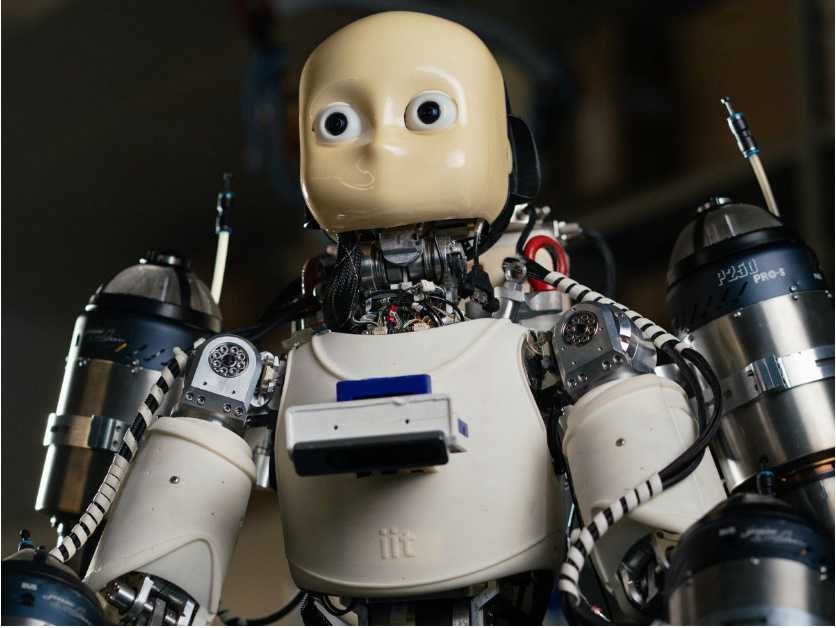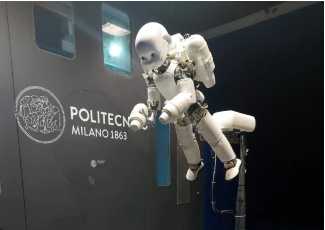| Flying Robot Baby Takes Off |
| Written by Lucy Black |
| Friday, 03 October 2025 |
|
A child-sized robot has achieved lift-off and stable flight after nearly ten years of development. The developers say this is the first successful vertical takeoff of a jet-powered flying humanoid robot. iRonCub3 managed to get to a magnificent 50 centimeters off the ground for several seconds in tests. The robot is a project from the Artificial and Mechanical Intelligence Lab at the Italian Institute of Technology (IIT) in Genoa, Italy. The more cynical members of our editorial team did suggest that taking ten years to lift a doll not very far into the air isn't an obvious cause for celebration, but progress is progress.
The eventual aim for iRonCub or its descendents to provide help in disasters such as fires or floods, when a suitable robot could get quickly to a location while avoiding ground obstacles, then land and walk while using its hands and arms to move debris and open doors. The aerodynamics and control studies have been described in a paper in Nature Communications Engineering, an open access journal from the Nature Portfolio. The research was carried out at researchers from the IIT in collaboration with researchers at the DAER Aerodynamics Laboratory of Polytechnic of Milan and Stanford University, where deep learning algorithms were used to identify aerodynamic models. iRonCub3 is designed to be teleoperated. It integrates four jet engines, two mounted on the arms and two on a jetpack attached to the robot’s back. The latest incarnation has modifications to support the external engines, including a new titanium spine and heat-resistant covers for protection. The robot combined with the jet engines weighs about 70 kg, while the turbines can provide a maximum thrust force of more than 1000 N. The exhaust temperature can reach 800 degrees. Daniele Pucci, lead researcher in the team, said: “This research is radically different from traditional humanoid robotics and forced us to make a substantial leap forward with respect to the state of the art. Here, thermodynamics plays a pivotal role — the emission gases from the turbines reach 700°C temperature and flow at nearly the speed of sound." He said this means aerodynamics must be evaluated in real-time, while control systems must handle both slow joint actuators and fast jet turbines. Because it takes time for the engines to spool up or down, control has to come from the robot itself as it moves its arm-engines to maintain stability. While the achievements in flying for the robot are a long way from the dream of a flying superhero robot disaster saviour, Pucci says there are more immediate tangible benefits, citing a collaboration with an industrial company developing a new pneumatic gripper. "we had to do force estimation for controlling the gripper, and we realized that the dynamics looked really similar to those of the jet turbines, and so we were able to use the same tools for gripper control. That was an 'ah-ha' moment for us: first you do something crazy, but then you build the tools and methods, and then you can actually use those tools in an industrial scenario. That's how to drive innovation." The paper is available to read in Nature Communications Engineering.
More InformationLearning aerodynamics for the control of flying humanoid robots Related ArticlesWorld’s Smallest Wireless Flying Robot Takes Off Swarm-Developing Cyborg Cockroaches To be informed about new articles on I Programmer, sign up for our weekly newsletter, subscribe to the RSS feed and follow us on Twitter, Facebook or Linkedin.
Comments
or email your comment to: comments@i-programmer.info |



